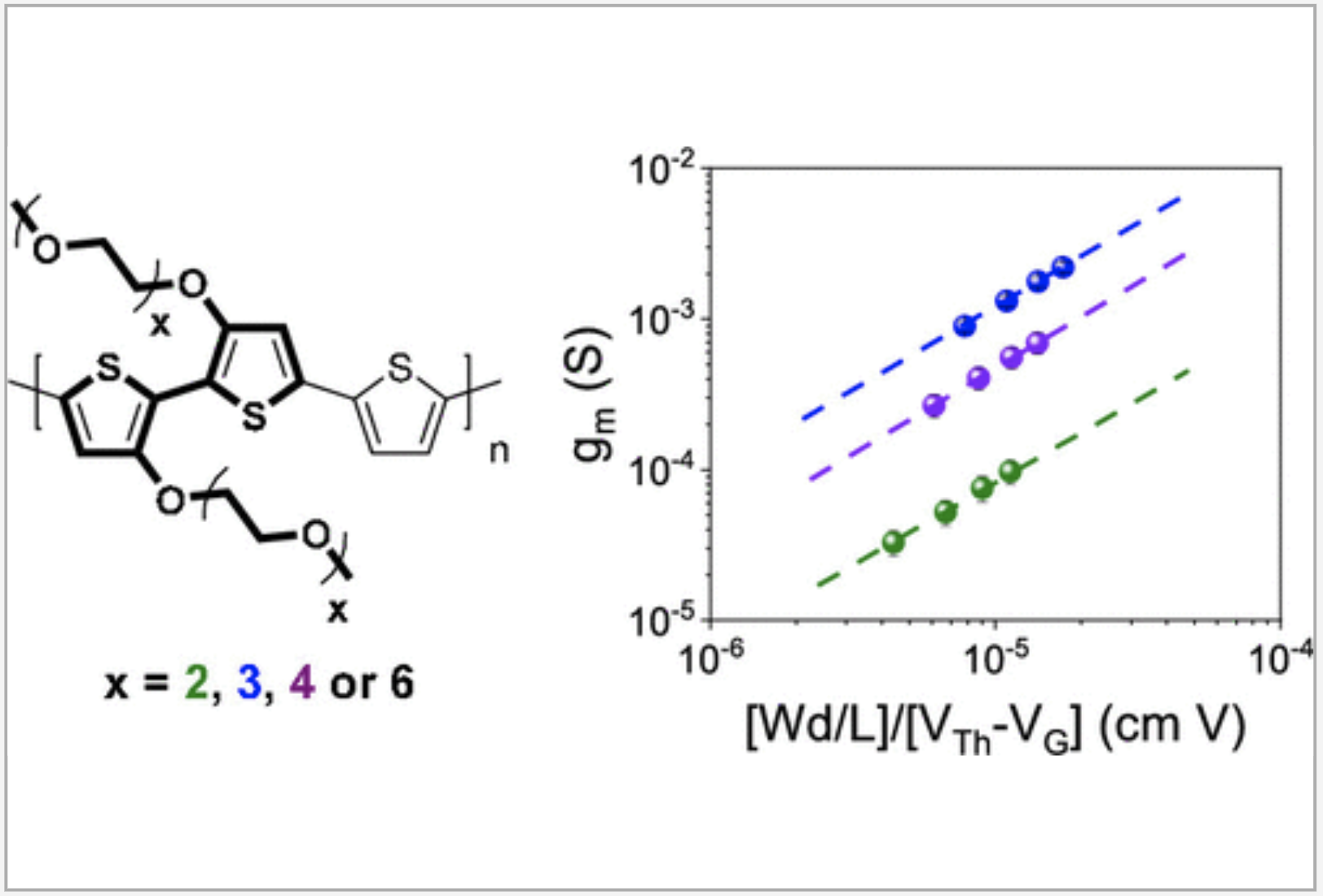Replacing the alkyl side chains on conventional semiconducting polymers with ethylene glycol (EG)-based chains is a successful strategy in the molecular design of mixed conduction materials for bioelectronic devices, including organic electrochemical transistors (OECTs). Such polymers have demonstrated the capability to conduct both ionic and electronic charges and can offer superior performance compared to the most commonly used active material, poly(3,4-ethylenedioxythiophene):poly(styrenesulfonate). While many research efforts have been dedicated to optimizing OECT performance through the engineering of the semiconducting polymers’ conjugated backbones, variation of the EG chain length has been investigated considerably less. In this work, a series of glycolated polythiophenes with pendant EG chains spanning two to six EG repeat units was synthesized and the electrochemical and structural characteristics of the resulting films were characterized by experimental means and molecular dynamics simulations. OECTs were fabricated and tested, and their performance showed a strong correlation to the the EG side chain length, thereby elucidating important structure–property guidelines for the molecular design of future channel materials. Specifically, a careful balance in the EG length must be struck during the design of EG-functionalized conjugated polymers for OECTs. While minimizing the EG side chain length appears to boost both the capacitive and charge carrier transport properties of the polymers, the chosen EG side chain length must be kept sufficiently long to induce solubility for processing, and allow for the necessary ion interactions with the conjugated polymer backbone.
